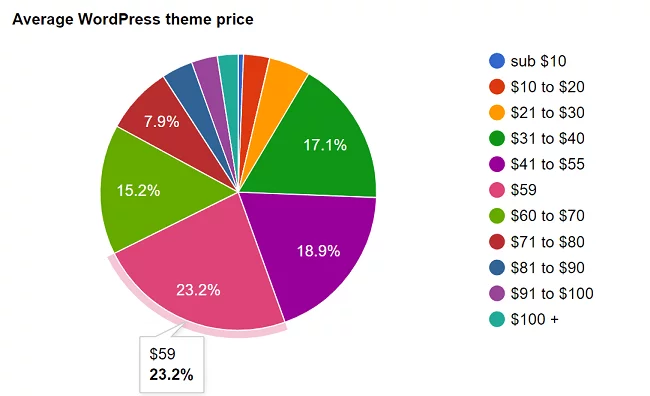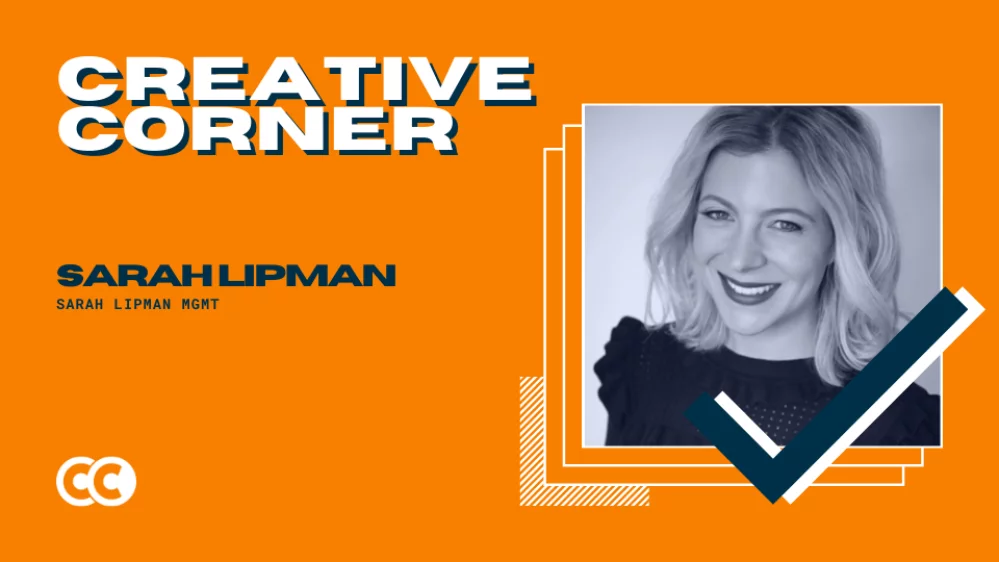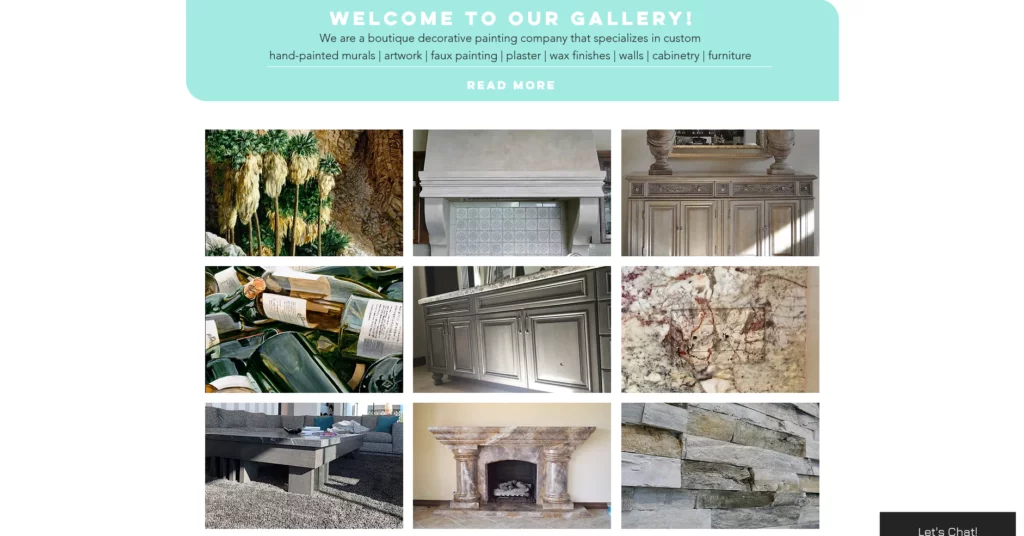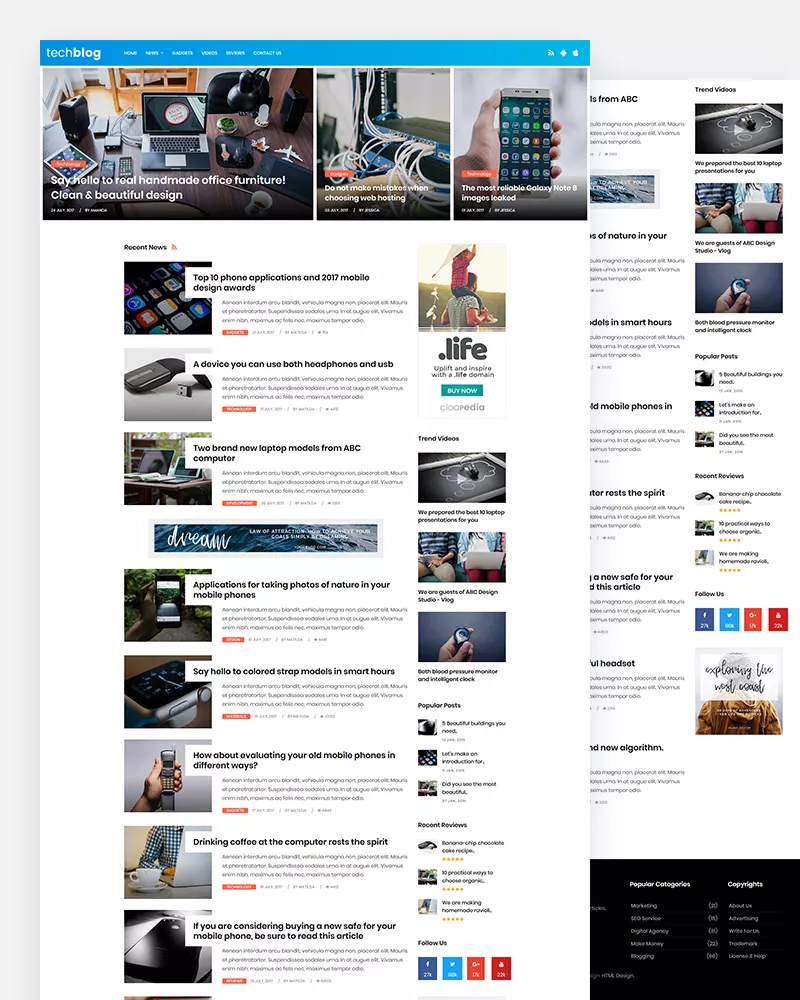In website development, one critical decision stands as the cornerstone of your project’s success: selecting the right WordPress theme. WordPress, hailed as the most popular content management system (CMS) worldwide, empowers millions of websites with its user-friendly interface, scalability, and robust features. While its versatility is undeniable, the significance of choosing the right theme often remains underestimated. In this article, we’ll delve into the importance of WordPress themes, their pivotal role in website design, and the central question that plagues every website owner: Free or paid theme?
The Significance of Selecting the Right WordPress Theme

Your website’s theme is the digital embodiment of your brand identity. It serves as the visual framework through which your visitors interact with your content, products, or services. A well-chosen WordPress theme can mean the difference between capturing your audience’s attention and driving them away. Here’s why selecting the right theme is so crucial:
- First Impressions Matter: When a visitor lands on your website, they form an opinion within seconds. An aesthetically pleasing and well-structured theme can leave a positive first impression, instilling trust and confidence.
- User Experience: The right theme enhances user experience by providing easy navigation, responsive design, and intuitive functionality. A positive user experience encourages longer visits and increased engagement.
- Search Engine Optimization (SEO): Search engines favor websites with responsive, well-coded themes. The right theme can significantly impact your SEO rankings and visibility on search engine results pages.
- Branding: Your theme should align with your brand’s aesthetics, colors, and overall identity. Consistency in branding helps in building a strong online presence.
The Popularity of WordPress and the Importance of Themes in Website Design

WordPress, with its extensive community and user base, has firmly established itself as the go-to choice for website development. According to recent statistics, WordPress powers over 40% of all websites on the internet. This popularity is not without reason. WordPress offers:
- Versatility: It accommodates a diverse range of websites, from blogs and portfolios to e-commerce stores and news outlets.
- Ease of Use: Its user-friendly interface allows both beginners and experienced developers to create and manage websites with ease.
- Plugins and Themes: The vast library of plugins and themes enhances WordPress’s functionality and customization options.
- Scalability: Whether you’re starting a personal blog or running a multinational corporation, WordPress can scale to meet your needs.
However, the true magic of WordPress lies in its themes. Themes are the creative backbone of your website, transforming a simple WordPress installation into a unique digital space. They offer the flexibility to adapt to various industries, catering to diverse needs and aesthetics.
Pros of Free Themes:
1. Cost Efficiency: Free WordPress themes are an attractive proposition for new website owners and those who wish to keep their costs minimal. The allure lies in their affordability, as they don’t require any upfront payment. In contrast, premium themes come with a price tag, and according to statistics from CodeinWP, the average cost for a premium theme is approximately $57.54. This financial aspect can be a significant consideration for individuals or businesses with budget constraints.
2. Return Policies: An important consideration when opting for premium themes is the return policy, which can vary between theme sellers. Some premium theme providers do not accept returns, meaning that if you purchase a premium theme and find that it doesn’t align with your expectations or lacks compatibility with essential plugins, you may be unable to obtain a refund or switch to a different theme. This lack of flexibility underscores the importance of thorough research before investing in a premium theme.
3. Official WordPress Approval: Free themes listed in the official WordPress theme directory undergo a stringent approval process. This multi-step evaluation ensures that these themes meet WordPress’s quality, security, and usability standards. Consequently, users can have confidence in the reliability and safety of themes sourced from the official directory.
4. Design Aesthetics: Free themes typically exhibit a minimalist design approach. This simplicity arises from the fact that they do not incorporate the multitude of premium features and widgets often found in paid themes. If your website does not heavily rely on a plethora of plugins, the streamlined design of free themes can lead to faster loading times, ultimately enhancing your site’s technical SEO and user experience.
5. User-Friendly Nature: Free themes are primarily crafted with beginners in mind. WordPress developers ensure that these themes are straightforward and intuitive to use, facilitating ease of navigation and customization. This user-friendly approach is an advantage for individuals who may not possess extensive technical expertise.
6. Compatibility with Plugins: Free themes are generally designed to be compatible with a wide range of WordPress plugins. This compatibility enhances the versatility and functionality of your website, allowing you to incorporate various features and functionalities seamlessly.
7. Additional Recommendations: Beyond the official WordPress theme directory, numerous curated lists and resources are available, offering high-quality free WordPress themes. Exploring these curated selections can provide you with a broader spectrum of design options and ensure you find a theme that aligns perfectly with your website’s goals and aesthetics.
Cons of Free Themes:
1. Limited Features and Functionality: Free themes typically come with limited features and lack the advanced functionalities that many larger or professional websites require. This can hinder the ability to create a highly customized and feature-rich website.
2. Lack of Uniqueness: Free themes are widely accessible and often boast high download numbers, with some surpassing 1 million downloads. Consequently, they lack uniqueness since they are readily available to anyone without the barrier of payment. This widespread use of the same themes can lead to a lack of differentiation among websites, potentially diluting your site’s distinctiveness.
3. Customization Constraints: Free themes offer fewer customization options compared to their premium counterparts. This limitation means that the differences in appearance and functionality between websites using the same free theme can be negligible. Users may start to notice the repetitive features of such themes, potentially affecting the site’s overall appeal.
4. Lack of Updates: A significant portion of themes available on the WordPress repository may receive infrequent updates. This can render them incompatible with the frequent version updates of the WordPress content management system (CMS), potentially causing functionality issues or security vulnerabilities.
5. Absence of Support: Free themes typically do not provide official support channels. With numerous contributors to free themes, it becomes challenging for WordPress to track specific authors or developers. Users must rely on third-party resources, such as WordPress forums, Facebook or LinkedIn groups, or hiring a web developer, for assistance. There’s no guarantee of receiving a quick or satisfactory response, especially if you’re not paying for dedicated support.
6. Code Quality and Security Concerns: Free themes not found on the official WordPress theme depository may have poorly coded or buggy implementations. This can expose your website to security vulnerabilities and potential issues that could compromise its functionality and data integrity.
7. Legal Considerations: It’s important to note that not all free themes are subject to the same licensing terms. Understanding the specific licensing associated with a theme is crucial to ensure you use it within legal boundaries.
Why Companies Create Free Themes?

Many individuals and companies generously create free WordPress themes, despite the complexity of designing them. Their motivations vary, but they often revolve around several key factors:
1. Portfolio Building: Some free themes serve as additions to an individual or company’s work portfolio. By showcasing their design and development skills through these themes, creators demonstrate their expertise and attract potential clients or employers.
2. Skill Enhancement: Crafting free themes is also a means for developers to enhance their skills and gain experience with the WordPress platform. It offers a practical way to refine their abilities and stay up-to-date with evolving web design practices.
3. Brand Exposure: Free WordPress themes can be a strategic move to gain exposure and promote a brand. Creators often include links in the theme’s footer that direct users to their original website. This exposure generates more traffic for the developer’s site and contributes to improved search engine optimization (SEO) through valuable backlinks.
4. Freemium Model: A freemium model is another motivation. Developers offer a free version of a theme with limited functionality. Users can try it out, and if they need more advanced features, they are encouraged to purchase the premium version of the same theme. This approach allows users to test the theme risk-free before deciding to invest in its premium features.
5. Potential Risks: Unfortunately, not everyone’s intentions are noble. Some individuals may create free themes with the ulterior motive of injecting malicious code into other people’s websites. This unethical practice underscores the importance of downloading themes from reputable sources and conducting security checks.
How to Check for Autheniticity in Free Themes?
Ensuring the security and integrity of a free WordPress theme from sources outside the official repository is paramount due to the heightened risk of malicious code. Here are comprehensive steps you can take to determine if a seemingly great free theme is too good to be true:
1. Conduct a Google Search: Start by performing a Google search using the name of the website or theme. Look for any negative comments or discussions about the theme online. Users who have encountered issues or suspicious behavior are likely to share their experiences, providing valuable insights.
2. Scan for Viruses: Utilize online tools like VirusTotal, a free service that can scan theme files for viruses and malware. Upload the theme file to VirusTotal, and it will check it against multiple antivirus engines to identify any potential threats.
3. Manual Inspection: If you have the patience and expertise, you can manually examine the theme files. Focus on commonly exploited areas like the CSS and footer.php files, where spammy backlinks or malicious code may hide. This thorough review may be time-consuming but can help identify hidden threats.
4. Theme Authenticity Check: WordPress offers several plugins designed to check the authenticity and security of themes. Consider using plugins like “Theme Authenticity Checker,” “Exploit Scanner,” or “Theme Check.” These tools can scan the theme for suspicious code patterns and vulnerabilities.
5. Google Safe Browsing: If you’ve already uploaded the theme to your WordPress site and want to ensure your website’s overall security, perform a scan using Google Safe Browsing. Add your domain name to the end of the following URL: https://www.google.com/safebrowsing/diagnostic?site= YourDomain.com. Alternatively, you can use Sucuri, a security company that offers a free site scanner to identify potential threats or vulnerabilities on your website.
When to Use a Free WordPress Theme:
- Starting a Personal Blog: If your primary goal is to launch a personal blog to share your thoughts, experiences, or creative work, a free WordPress theme can be an excellent choice. Personal blogs often prioritize content over intricate design, making a free theme a pragmatic option.
- Content Uniformity is Acceptable: If you don’t mind your website having a similar appearance to many others, a free theme is suitable. Free themes are commonly used and may lack the uniqueness that premium themes offer. This is acceptable if your focus is on content rather than design individuality.
- Basic Functionality Suffices: Free themes typically provide fundamental features and design elements. If your website’s requirements are straightforward and don’t demand advanced functionalities or intricate design, a free theme can fulfill your needs.
- Minimal Support Requirements: Free themes often come with limited or community-driven support. If you’re comfortable troubleshooting issues independently or don’t anticipate complex problems, a free theme can suffice. This is particularly ideal for those using WordPress primarily for simple blogging.
When to Use a Premium WordPress Theme:
- Business or Expanding Website: If you intend to use WordPress for a business website or plan to expand your existing site to include complex functionalities like e-commerce, a premium theme is a more suitable choice. Premium themes often offer advanced features necessary for business operations.
- Unique Design: Premium themes are designed to stand out. If you want your website to have a distinct and eye-catching appearance, a premium theme’s customization options and exclusive design elements make it the preferable choice.
- Advanced Functionality: Premium themes typically provide a broader range of features, such as e-commerce integrations, advanced SEO tools, and extensive customization options. If your website requires these advanced capabilities, investing in a premium theme is advantageous.
- Dedicated Support: Premium themes come with dedicated customer support teams. If you lack the technical expertise to troubleshoot issues or need prompt assistance, a premium theme’s support services can be invaluable in resolving problems and maintaining your website’s functionality.
Why Consider Premium WordPress Themes?

Investing in a premium WordPress theme is akin to making a strategic commitment to enhance your online presence, especially for your business. Premium themes come with a higher price tag, and there’s a reason for that—they offer a suite of premium features and advantages that can be invaluable for your website’s success.
Here’s a comprehensive breakdown of what you get with a premium WordPress theme and why it’s worth considering this investment:
1. Comprehensive Support:
With a premium theme, you’re not just purchasing the theme itself; you’re also investing in a robust support system. Premium theme providers typically offer dedicated customer support to assist you with any theme-related issues or questions. This ensures that you have a safety net in case you encounter challenges during theme setup or customization.
2. Frequent Updates:
Premium themes are actively maintained and updated to remain compatible with the latest versions of WordPress, PHP, CSS, and HTML. This regular maintenance is critical for keeping your website secure, functional, and up to date with evolving web standards.
3. Extensive Customization Options:
Premium themes often provide an extensive array of customization options. They offer more flexibility in terms of design, layout, color schemes, and typography. This allows you to tailor your website’s appearance to align with your brand identity and specific preferences.
4. Enhanced Security:
Premium themes are typically built with a focus on security. They undergo rigorous testing and adhere to best coding practices, reducing the risk of vulnerabilities, viruses, or third-party threats. This added layer of security helps safeguard your website and its data.
5. Unique Design:
A premium WordPress theme stands out for its unique and professionally designed templates. These themes are crafted with meticulous attention to detail, ensuring that your website looks polished and distinct. A unique design helps your site leave a lasting impression on visitors.
6. Standards Compliance:
Premium themes adhere to industry standards and are consistently updated to align with the latest WordPress requirements. This ensures compatibility with the WordPress ecosystem, preventing compatibility issues that could arise with outdated themes.
7. Responsiveness:
In today’s mobile-driven world, a premium WordPress theme often comes with responsive design capabilities. This means your website automatically adjusts to different screen sizes and devices, improving user experience and meeting Google’s mobile-responsiveness ranking factor.
8. Cross-Browser Compatibility:
Premium themes are rigorously tested to ensure compatibility with various web browsers. This ensures that your website functions seamlessly and looks great across different browsers, providing a consistent experience for all users.
9. Plugin Compatibility:
Premium themes are designed to work well with a wide range of plugins, adding valuable features and functionalities to your website. This compatibility enhances the versatility and performance of your site.
Free Vs. Paid WordPress Themes:
| Aspect | Free WordPress Themes | Paid WordPress Themes |
|---|---|---|
| Cost | $0 | Varies (average: $57.54) |
| Number of Available Themes | Thousands | Thousands |
| Official Support | Limited or Community-Driven | Dedicated Support Teams |
| Update Frequency | Varies | Regular Updates |
| Customization Options | Limited | Extensive |
| Design Uniqueness | Often Common | Unique |
| Security | Varies | Enhanced Security |
| Responsive Design | Varies | Usually Responsive |
| Cross-Browser Compatibility | Varies | Generally Supported |
| Plugin Compatibility | Varies | Generally Supported |
| Mobile-Responsiveness | Often Inconsistent | Consistently Supported |
| Theme Standards Compliance | Varies | Typically Compliant |
Factors to Consider When Choosing Between Free and Paid WordPress Themes
Choosing the right WordPress theme is a pivotal decision in the journey of website development. WordPress, with its extensive library of themes, offers a spectrum of options to cater to diverse needs and preferences. However, when it comes to selecting between free and paid themes, website owners face a crucial crossroads. Each choice comes with its own set of advantages and drawbacks, and making an informed decision requires careful consideration of various factors.
Website 1: Sarah’s Creative Corner

Goal: Personal blog by Sarah, sharing art, travel, and creative writing.
Theme Choice: Free Theme
Impact:
- Design: The free theme provided a clean and minimalistic layout that showcased Sarah’s content beautifully. The focus on content and ease of navigation enhanced the overall user experience.
- Functionality: While the theme had limitations in terms of customization and features, it offered essential blogging functionalities. Sarah appreciated the simplicity of managing her posts.
- Success: Sarah’s engaging content and user-friendly design attracted a loyal readership. Her blog, “Sarah’s Creative Corner,” grew steadily over time, despite not having advanced features.
Website 2: Artistic Elegance Gallery

Goal: E-commerce platform for “Artistic Elegance,” selling original artwork.
Theme Choice: Paid Theme
Impact:
- Design: “Artistic Elegance Gallery” chose a paid theme designed specifically for e-commerce. This allowed for stunning product displays and galleries. Customization options helped create a visually appealing and unique online art gallery.
- Functionality: Advanced features such as a secure shopping cart system, integrated payment gateways, and customer reviews contributed to a seamless shopping experience.
- Success: Sales at “Artistic Elegance Gallery” increased significantly due to the professional design and enhanced functionality. The paid theme investment paid off with improved customer satisfaction and higher revenue.
Website 3: TechNewsNow

Goal: Tech news website offering daily updates on the latest technology trends.
Theme Choice: Free Theme (Initially) → Paid Theme (Later)
Impact:
- Design: Initially, “TechNewsNow” used a free theme with a basic layout and limited customization options. The transition to a paid theme allowed for a modern and attractive design that matched the tech-savvy audience’s expectations.
- Functionality: With the paid theme, “TechNewsNow” introduced advanced features like real-time news updates, interactive charts, and user profiles. This increased user engagement and time spent on the site.
- Success: The change to a paid theme resulted in a substantial increase in site traffic and engagement. “TechNewsNow” established itself as a reputable source for tech news and reviews.
Website 4: Brewster’s Coffee Haven

Goal: Promote “Brewster’s Coffee Haven,” a local coffee shop’s menu, events, and community engagement.
Theme Choice: Free Theme
Impact:
- Design: The free theme was simple but effective in showcasing Brewster’s Coffee Haven’s menu, events calendar, and community initiatives. It highlighted essential information without overwhelming visitors.
- Functionality: Basic functionalities like contact forms and location maps were available, which met the coffee shop’s requirements.
- Success: The website successfully attracted local customers and kept them informed about events. While it lacked some advanced features, it served its primary purpose of community engagement effectively.
Conclusion:
In the end, the choice between free and paid WordPress themes depends on your unique requirements. Assess your website goals, budget, customization needs, support expectations, and security concerns carefully. Consider these factors as puzzle pieces that must fit together to create a coherent and successful website.
Ultimately, the impact of your theme choice on your website’s design, functionality, and success cannot be overstated. It’s not just a matter of aesthetics; it’s about aligning your theme with your goals and audience. So, take your time, explore your options, and make an informed decision that sets your website on the path to success.
Is your website slow? Are you planning to switch to another WordPress Webhost? Then check out our Fully Managed WordPress Hosting Service that can make your website 30x faster!
Success!
FAQs on WordPress Themes:
Do I need coding skills to use a premium theme?
No, premium themes are designed to be user-friendly and often come with drag-and-drop builders and customization panels that do not require coding knowledge.
Are premium themes more secure than free themes?
Premium themes tend to have better security because they undergo rigorous testing and updates. However, security also depends on how well you maintain your WordPress installation.
What should I look for when choosing a premium theme?
When choosing a premium theme, consider factors like your website’s niche, customization needs, support options, and the reputation of the theme developer.
Can I try a premium theme before purchasing it?
Some premium theme providers offer demo versions or limited free trials, allowing you to explore the theme’s features and design before making a purchase.



